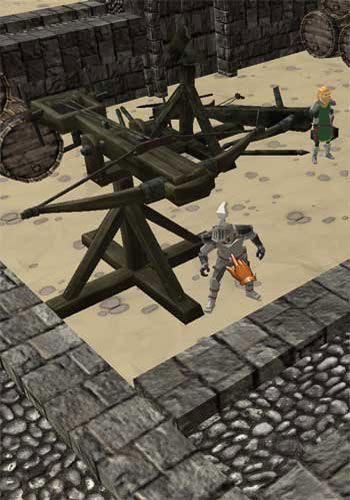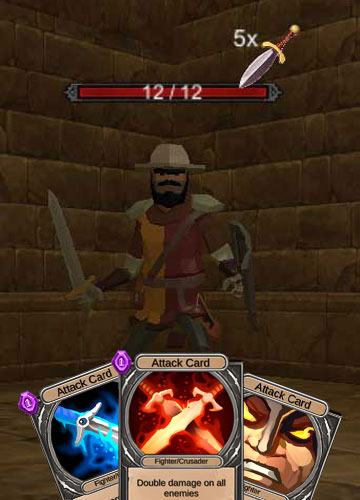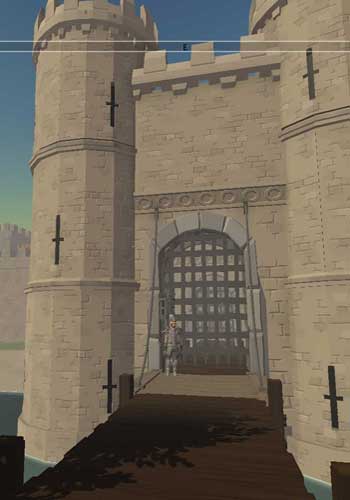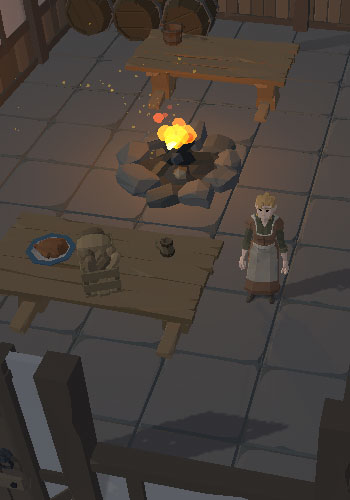This map shows the areas of England in 1065 that the most important Earls controlled.

Lichfield Cathedral
 ichfield Cathedral is built on the site of the church of St. Chad, the bishop of the Mercians in 667. His shrine on the site was a place for pilgrims to travel to. Although a lot of rebuilding work has been done on the Cathedral in relatively recent times, much earlier sections still exist. The central spire collapsed in the middle of the seventeenth century and was rebuilt then and again in the eighteenth century. The west front is covered with many statues, including the Kings of England, but very few are original. Building work on a new church possibly began in 1195 and the construction of the nave dates back to between 1265 and 1293, and the octagonal chapter house dates back to around 1240. The Lady Chapel dating from around 1330 was built by William Eyton is not aligned with or attached to the main church. The presbytery was later added to link the two together.
ichfield Cathedral is built on the site of the church of St. Chad, the bishop of the Mercians in 667. His shrine on the site was a place for pilgrims to travel to. Although a lot of rebuilding work has been done on the Cathedral in relatively recent times, much earlier sections still exist. The central spire collapsed in the middle of the seventeenth century and was rebuilt then and again in the eighteenth century. The west front is covered with many statues, including the Kings of England, but very few are original. Building work on a new church possibly began in 1195 and the construction of the nave dates back to between 1265 and 1293, and the octagonal chapter house dates back to around 1240. The Lady Chapel dating from around 1330 was built by William Eyton is not aligned with or attached to the main church. The presbytery was later added to link the two together.
Hereford Cathedral
 ereford Cathedral is dedicated to St. Mary and St. Ethelbert. According to the historian Bede, in 676 Bishop Putta of Rochester, after the sack of his own city and cathedral by Aethelred, was granted a plot of land assumed to be at Hereford for a new church. In around 792 King Ethelbert of East Anglia was murdered on the order of Offa, King of the Mercians. Ethelbert's body was buried in a wooden church on the site of the present Cathedral. Between 1052 and 1056, in the reign of Edward the Confessor, Bishop Aethelstan built a new church on the site. The new church was destroyed in 1056 by Griffin King of the Welsh who killed the Cathedral's bishop and many of the clergy. The Norman invasion brought some stability and in 1080 under Bishop Losinga rebuilding work began on the Cathedral which had been in ruins since the Welsh attack. There is a chair within the Cathedral supposed to be the chair used by King Stephen at his royal proclamation in 1138.
ereford Cathedral is dedicated to St. Mary and St. Ethelbert. According to the historian Bede, in 676 Bishop Putta of Rochester, after the sack of his own city and cathedral by Aethelred, was granted a plot of land assumed to be at Hereford for a new church. In around 792 King Ethelbert of East Anglia was murdered on the order of Offa, King of the Mercians. Ethelbert's body was buried in a wooden church on the site of the present Cathedral. Between 1052 and 1056, in the reign of Edward the Confessor, Bishop Aethelstan built a new church on the site. The new church was destroyed in 1056 by Griffin King of the Welsh who killed the Cathedral's bishop and many of the clergy. The Norman invasion brought some stability and in 1080 under Bishop Losinga rebuilding work began on the Cathedral which had been in ruins since the Welsh attack. There is a chair within the Cathedral supposed to be the chair used by King Stephen at his royal proclamation in 1138.
St. Thomas Cantilupe was Bishop at Hereford from 1275. He was Lord High Treasurer and twice Chancellor of Oxford. He supported Simon de Montfort in his attempts to prevent foreigners taking religious posts in England, and left the country after Simon was defeated. King Edward I brought Cantilupe back to become Hereford's Bishop. In 1786 the west end of the Cathedral fell down damaging the Norman nave. Repairs were undertaken by James Wyatt.
Peterborough Cathedral
 n abbey was founded on the site around 655 by either Saxulf or Peada the first Christian king of Mercia. The abbey was consecrated by the Archbishop of Canterbury in 655. At the end of the 9th century the Danes invaded and raised the abbey to the ground. The abbey lay in ruins until the Aethelwold, Bishop of Winchester, with help from King Edgar rebuilt the abbey and consecrated it in 972 in the presence of Archbishops Dunstan of Canterbury and Oswald of York. The second abbey was run under the rule of the Benedictines. The abbey, dedicated to St. Peter, had a wall built around it for defence and the name changed to Burgh St. Peter where Burgh means fortified. In 1066 Leofric, the abbot of Peterborough, stood at Harold's side at Hastings but was wounded and died. His successor Brando mistakenly supported Edgar the Atheling instead of William the Conqueror and when William enforced his rule Brando had to pay him a fine. A Norman abbot was installed at Peterborough when Brando died in 1069. In 1116 fire struck the abbey and the building was badly damaged. Rebuilding work began in 1118 and took 120 years to complete. The building was consecrated in 1238 by the Bishop of Lincoln, Grosseteste. The abbey became a Cathedral in 1541 after the abbeys were dissolved in 1539. Notable people to be buried here are Catherine of Aragon who was divorced from King Henry VIII and Mary Queen of Scots who was buried here before being moved to Westminster Abbey.
n abbey was founded on the site around 655 by either Saxulf or Peada the first Christian king of Mercia. The abbey was consecrated by the Archbishop of Canterbury in 655. At the end of the 9th century the Danes invaded and raised the abbey to the ground. The abbey lay in ruins until the Aethelwold, Bishop of Winchester, with help from King Edgar rebuilt the abbey and consecrated it in 972 in the presence of Archbishops Dunstan of Canterbury and Oswald of York. The second abbey was run under the rule of the Benedictines. The abbey, dedicated to St. Peter, had a wall built around it for defence and the name changed to Burgh St. Peter where Burgh means fortified. In 1066 Leofric, the abbot of Peterborough, stood at Harold's side at Hastings but was wounded and died. His successor Brando mistakenly supported Edgar the Atheling instead of William the Conqueror and when William enforced his rule Brando had to pay him a fine. A Norman abbot was installed at Peterborough when Brando died in 1069. In 1116 fire struck the abbey and the building was badly damaged. Rebuilding work began in 1118 and took 120 years to complete. The building was consecrated in 1238 by the Bishop of Lincoln, Grosseteste. The abbey became a Cathedral in 1541 after the abbeys were dissolved in 1539. Notable people to be buried here are Catherine of Aragon who was divorced from King Henry VIII and Mary Queen of Scots who was buried here before being moved to Westminster Abbey.
Wenlock Priory
 priory at Much Wenlock. A religious building has stood on the site of the priory since the late seventh century. In around 1040 Leofric, the Earl of Mercia, built a Minster on the site and after the Conquest of 1066 monks from a La Charite sur Loire, a daughter house of Cluny, came across and took over the running of the priory. The present priory was constructed at the start of the 1200's and played host to King Henry III on several occasions.
priory at Much Wenlock. A religious building has stood on the site of the priory since the late seventh century. In around 1040 Leofric, the Earl of Mercia, built a Minster on the site and after the Conquest of 1066 monks from a La Charite sur Loire, a daughter house of Cluny, came across and took over the running of the priory. The present priory was constructed at the start of the 1200's and played host to King Henry III on several occasions.
Chester Cathedral
 hester Cathedral has suffered decay over the years due partly to the use of the soft red sandstone in its construction leading to its restoration in Victorian times. It was not until Henry VIII that the church was raised to its cathedral status. A church on the site dates back to Saxon times when a shrine was built to dedicate to a saint. The saint was Werburgh, the daughter of the King of Mercia and her shrine can be found in the Lady chapel. The Benedictines took over the running of the church in the late eleventh century and lasted there until 1540. The north transept, north tower and parts of the cloister are all that remain of the early Norman church. The transepts are very different in age and size, the north transept is Norman and quite small while the south transept is dated around 1340 and much too big compared with the size of the nave. The chapter-house is rectangular with its original vaulted ceiling and dates to before 1250.
hester Cathedral has suffered decay over the years due partly to the use of the soft red sandstone in its construction leading to its restoration in Victorian times. It was not until Henry VIII that the church was raised to its cathedral status. A church on the site dates back to Saxon times when a shrine was built to dedicate to a saint. The saint was Werburgh, the daughter of the King of Mercia and her shrine can be found in the Lady chapel. The Benedictines took over the running of the church in the late eleventh century and lasted there until 1540. The north transept, north tower and parts of the cloister are all that remain of the early Norman church. The transepts are very different in age and size, the north transept is Norman and quite small while the south transept is dated around 1340 and much too big compared with the size of the nave. The chapter-house is rectangular with its original vaulted ceiling and dates to before 1250.
Whitby Abbey
 religious site may have existed on the cliffs at Whitby as early as 655 when the Northumbrian king Oswy defeated Penda, the king of Mercia and undertook the founding of several monasteries. The monastery was sited high on the exposed cliffs over the town of Whitby and may have been the site of Roman occupation several hundred years before. In 664, the Synod of Whitby took place where the differences between the Roman and Celtic calendars were discussed. It was decided to adopt the Roman calendar. Little is known of the abbey until 867 when the area was invaded by the Danes. The monastery, like many other in the region were destroyed. The twelfth century historian, William of Malmsbury reports that in 944 King Edmund I took control of York and the surrounding area and moved sacred relics from the ruins of Whitby monastery to Glastonbury Abbey. The monastery laid in ruins until the end of the eleventh century when monks from Winchcombe and Evesham travelled to the north and settled there. An abbey was refounded with help from the Percy family and a new Saxon monastery was built on the site. Under Serlo de Percy and William de Percy a typical Benedictine church was constructed consisting of a nave, transepts and apsidal chapels at the eastern end. Whitby had three apses, one main one and two smaller coming from the two transepts. The eastern end of the church was rebuilt starting in around 1220. The strange thing is that the new section of the church was built out of line with the existing nave. The end of the Abbey came in 1540 like so many others and was granted to the Cholmley family. Since then it fell into disrepair and was robbed for its building materials. The central tower fell in 1830 leaving a remaining ghostly shell.
religious site may have existed on the cliffs at Whitby as early as 655 when the Northumbrian king Oswy defeated Penda, the king of Mercia and undertook the founding of several monasteries. The monastery was sited high on the exposed cliffs over the town of Whitby and may have been the site of Roman occupation several hundred years before. In 664, the Synod of Whitby took place where the differences between the Roman and Celtic calendars were discussed. It was decided to adopt the Roman calendar. Little is known of the abbey until 867 when the area was invaded by the Danes. The monastery, like many other in the region were destroyed. The twelfth century historian, William of Malmsbury reports that in 944 King Edmund I took control of York and the surrounding area and moved sacred relics from the ruins of Whitby monastery to Glastonbury Abbey. The monastery laid in ruins until the end of the eleventh century when monks from Winchcombe and Evesham travelled to the north and settled there. An abbey was refounded with help from the Percy family and a new Saxon monastery was built on the site. Under Serlo de Percy and William de Percy a typical Benedictine church was constructed consisting of a nave, transepts and apsidal chapels at the eastern end. Whitby had three apses, one main one and two smaller coming from the two transepts. The eastern end of the church was rebuilt starting in around 1220. The strange thing is that the new section of the church was built out of line with the existing nave. The end of the Abbey came in 1540 like so many others and was granted to the Cholmley family. Since then it fell into disrepair and was robbed for its building materials. The central tower fell in 1830 leaving a remaining ghostly shell.
Dudley Castle
 udley Castle was originally a Norman castle and was built in the Midlands by William Fitz-Ansculf just after the Norman Conquest in 1071. The land had been held by Edwin, Earl of Mercia, in the time of Edward the Confessor and he was allowed to retain the lands after the Conquest. Edwin was later killed after rebelling against William the Conqueror. During the civil war between Matilda and King Stephen the castle was held by a supporter of Matilda until 1138 when Stephen attacked and destroyed the castle and the surrounding area. In 1165 Gervase, a son of the Castle's owner, founded a priory at Dudley, but in 1175 he rebelled against King Henry II. The King in return attacked and destroyed much of the castle. On the death of Gervase the castle became the property of the de Somery family through marriage to Gervase's sister. In 1264 Roger de Somery was granted a license to refortify the castle. Building work continued during the ownership of John de Somery who had a bad reputation for murder and theft to fund the construction of the new castle.
udley Castle was originally a Norman castle and was built in the Midlands by William Fitz-Ansculf just after the Norman Conquest in 1071. The land had been held by Edwin, Earl of Mercia, in the time of Edward the Confessor and he was allowed to retain the lands after the Conquest. Edwin was later killed after rebelling against William the Conqueror. During the civil war between Matilda and King Stephen the castle was held by a supporter of Matilda until 1138 when Stephen attacked and destroyed the castle and the surrounding area. In 1165 Gervase, a son of the Castle's owner, founded a priory at Dudley, but in 1175 he rebelled against King Henry II. The King in return attacked and destroyed much of the castle. On the death of Gervase the castle became the property of the de Somery family through marriage to Gervase's sister. In 1264 Roger de Somery was granted a license to refortify the castle. Building work continued during the ownership of John de Somery who had a bad reputation for murder and theft to fund the construction of the new castle.
After the death of John in around 1321, Dudley Castle became the property of his sister Margaret who married into the de Sutton family. At this time large amounts of building work took place at the castle, including a barbican to the outer gatehouse and chapel.
In the 1530s the castle's residential block was rebuilt in the latest style by John Dudley. But he was arrested and executed by Queen Mary for his involvement in the attempt to place his daughter-in-law, Lady Jane Grey, crowned as the Queen of England. The castle then went to Edward Sutton who in 1575 invited Queen Elizabeth I to visit.
The last time Dudley Castel took part in historical events was during the English Civil War. The castle was held by Royalisty troops and sieges were held. Eventually the castle was surrendered and in 1647 the castle's defenses were dismantled so that it could not be used as a stronghold again. The remains became the property of the Ward family who used the domestic range for some time.









